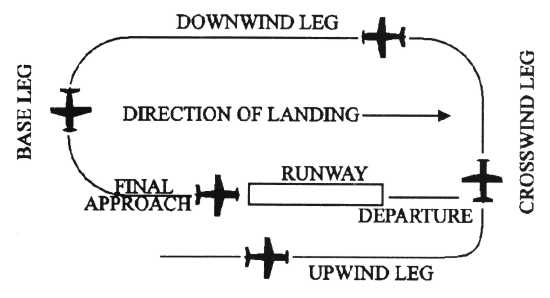A few weeks ago I shared with you all the choices you have available in the form of flight simulation software. I take it you’ve settled on one and have successfully installed the software onto your computer. Unfortunately, most of what I will blog about will directly relate to Microsoft Flight Simulator. As I have stated in previous articles, both FSX (released in 2006) and even FS9 (Flight Simulator 2004 released in 2003) are used by many flight simulator enthusiasts today. Add-ons in the form of both software (scenery, aircraft etc.) are still developed and hardware developers for the most part still support both the old FS9 and FSX platforms. Regardless of the decision you made on flight simulation software, once you get it installed the next step is to take that first flight.
While it may be tempting to load up the default Boeing 747 and depart from KJFK in New York and fly to London Heathrow. If this is your first time in a computer flight simulator, please allow me to provide some advice and encourage you to wait a little while before you jump into the big jets.
Remember, a normal aircraft flight includes several parts of flight including taxi, takeoff, climb, cruise, descent and landing. Each of these parts do require a certain amount of practice and they are the same regardless of aircraft type. Practice really does make perfect.
Tip – You may have read previous articles on my blog about flying for virtual airlines and flying online with other pilots and controllers on the VATSIM or IVAO Networks. These are both fun aspects which can and will add additional layers of realism to your flight simulation experience. However, please wait until you have sufficient experience before pursuing as VA’s and the online networks require you to have the necessary skills to operate aircraft in all aspects of flight (taxi, takeoff, climb, cruise, descent and landing).
In addition to the Microsoft Flight Simulator flight tutorials which will help you tremendously, load up a flight in the default Cessna 172 Skyhawk from KEDW (Andrews Air Force Base, California). I suggest this location as the runways are wide and long. Consider turning off the options for other traffic and set the weather to imitate a clear, calm day and just spend time practicing and maneuvering your Cessna 172 both on the ground and in the air.
Depart the active runway and practice hand-flying the aircraft at first. Practice maintaining your speed, altitude and direction. Don’t worry about landing the aircraft at this time. Remember this is just a simulator and nothing bad will happen if you crash a few times. As you spend more time practicing your take-off maneuvers, you’ll get the hang of properly trimming out the aircraft where it will fly straight and level with minimum input from the controls.
Tip – While the aircrafts autopilot functionality can certainly assist in controlling the aircrafts direction, altitude, etc…these tasks should also be understood and practiced without the need of relying on the aircraft autopilot.
Once you can successfully taxi to the active runway, takeoff, climb and cruise you really only have two elements of flight to master and that is descent and landing. Again, using your default Cessna 172 at KEDW, practice landing maneuvers using the diagram below. Depart KEDW and fly a runway heading while climbing a few hundred feet. Practice turning on the crosswind leg, then again on the downwind leg (parallel to the active runway), then the base leg and then final approach. Don’t worry about descending and landing. Just practice this important maneuver and make sure you can correctly line up with the runway each time.

After you can demonstrate flying this pattern and being successful at lining up to the runway on final approach, then introduce descent and practice “touch-and-go” landing maneuvers. Again, KEDW is a perfect facility to practice this with runway 04R/22L being a long 15,024 feet in length (2.84 miles).
As you complete one after another successful “touch-and-go” landings, try to eventually land in the touchdown zone and centered on the runway. Practice will make this become perfect in time.
I can’t tell you how many hours it will take to master the maneuvers I’ve discussed here today. You should spend adequate time practicing until you feel comfortable. But I can tell you that in time it will eventually become second nature. As you get better and better controlling the Cessna then work your way up. Before you know it, you’ll be the PIC (Pilot In Command) of a Boeing 747 headed from KJFK to EGLL.
Until next time…
Happy Flying!!!
JT
Fine Print: Unfortunately I feel the need to state for the record that my “How To” articles and tips are for flight simulation purposes only and should not be used for real world aviation.
